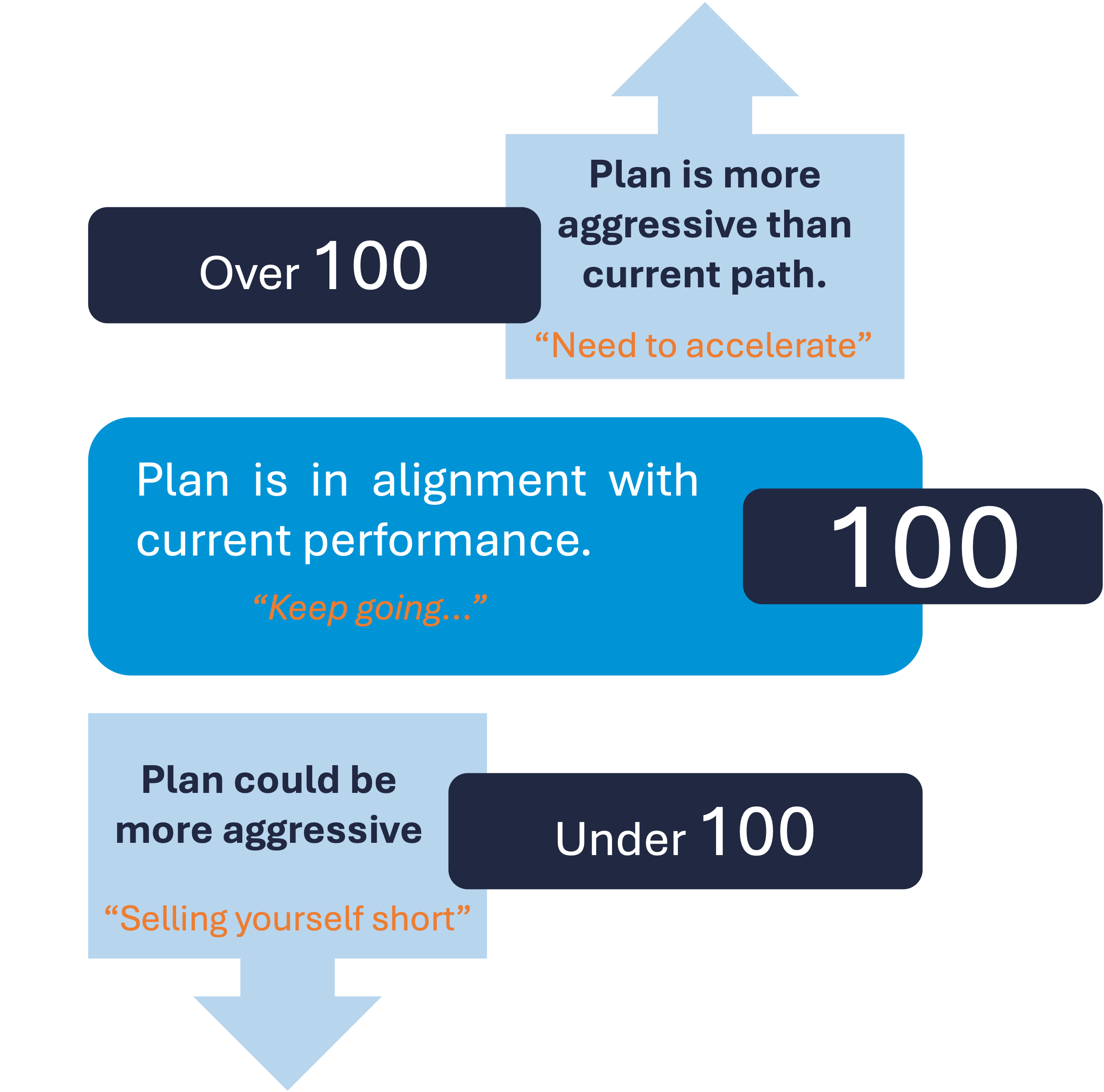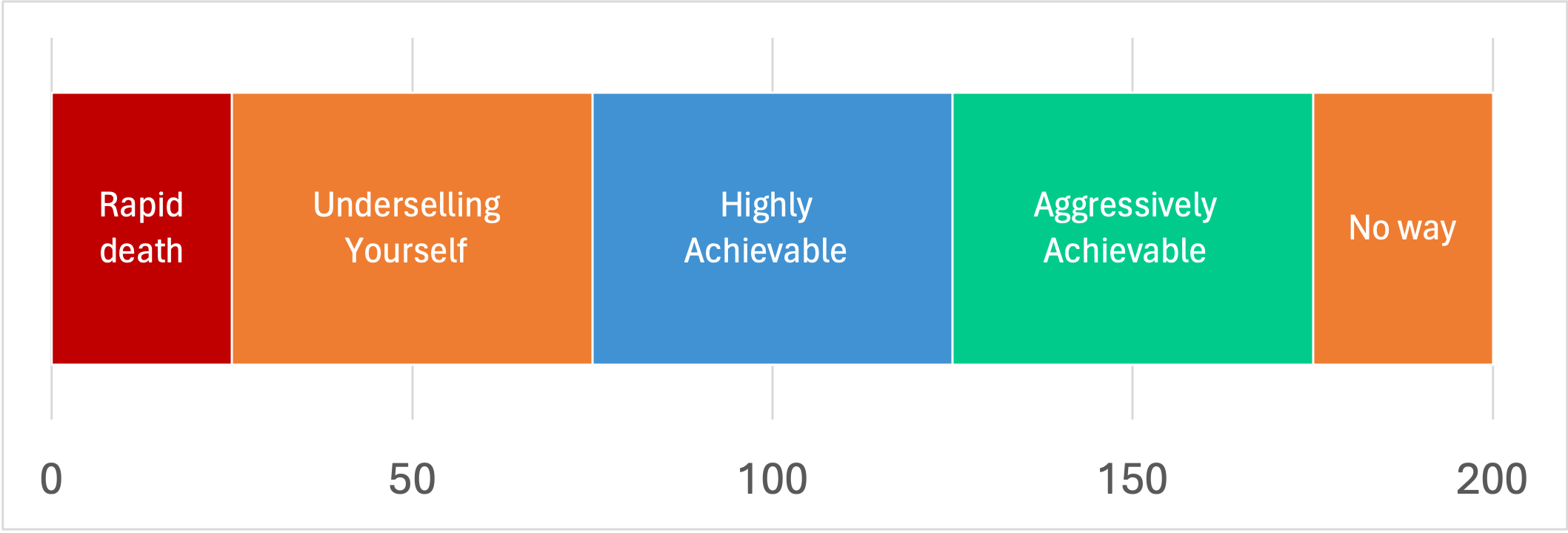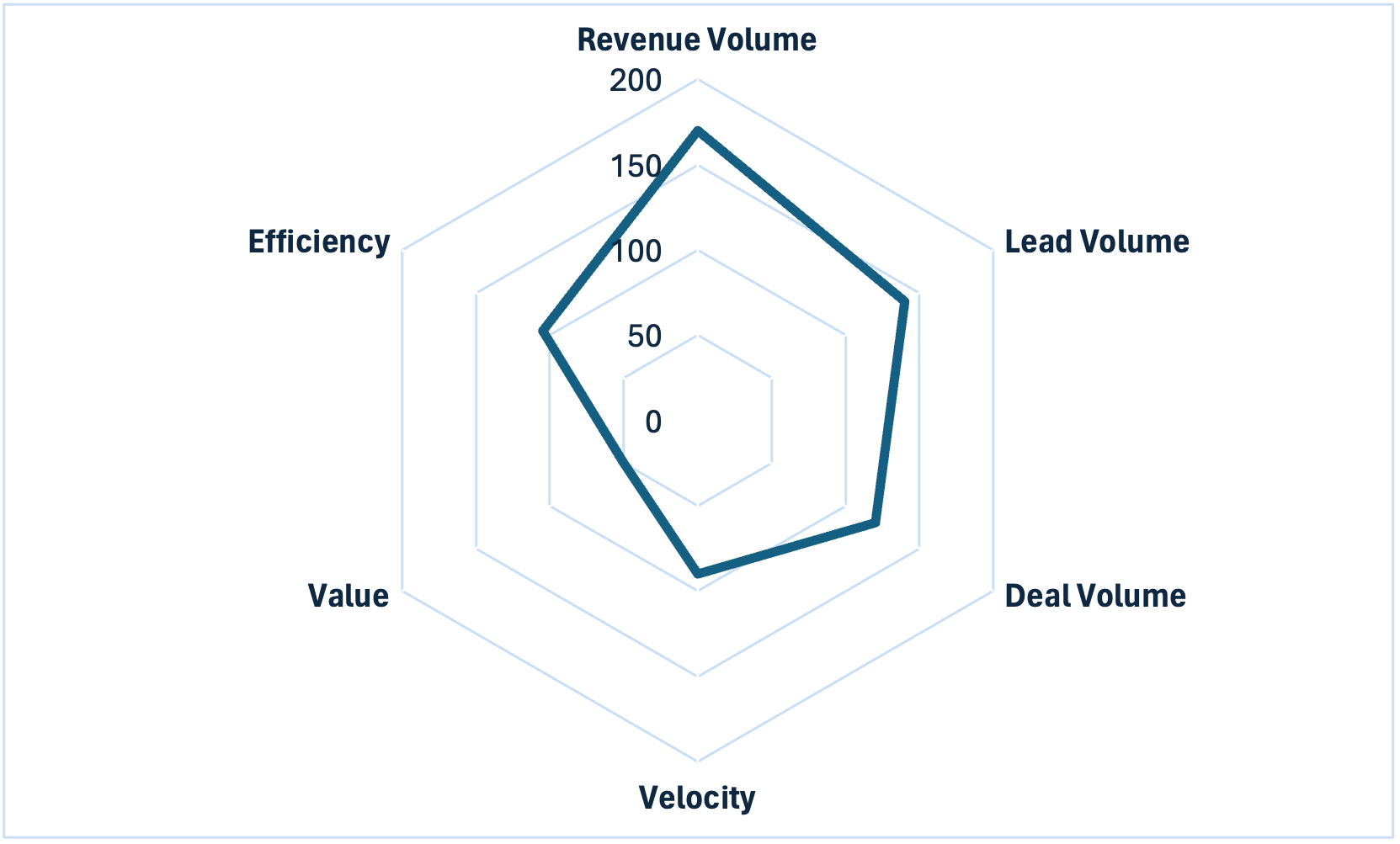Debunking the 5x Pipeline Metric: Hello Revenue Velocity
Why relying on an arbitrary threshold simply doesn't work
How Achievable is your Revenue Growth Plan?
Before we get into the details of the MultiplyGTM Index™, lets’ first recap the bigger picture objective pertaining to GTM planning. GTM planning is all about delivering the right product(s), to the right audience, at the right time, to generate revenue.
In the world of SaaS and recurring revenue business, if you continue to generate new sales year-on-year and your customers renew, then your revenue exponentially grows! In other words, in theory, simply keep selling the same amount each year and your revenue will grow and grow! Welcome to the wonder of recurring revenue business.
However, as with all good things in life, there comes a twist. First, make sure you retain your happy customers so that they renew. Second, you must figure out how to keep acquiring new sales. This is where your GTM plan is essential. Figuring out how to achieve growth in new sales volume is hard to determine. Ascend too fast and you will stall due to a vacuum of leads; ascend too slowly and your revenue growth rate will not be sufficient to support your expenditure. Avoid doing an “Icarus” but at the same time ensuring you actually take off in a timely manner is a tough balance to achieve.
Being a serial business founder, I have always had a love-hate relationship for the startup phase of business because determining appropriate growth trajectory is damn hard. Yes, it’s exciting to land on a company name and brand; yes, it’s exciting to a see a concept come to life in the form of a product; yes, it’s exciting to land your first customer but…startups are a pain. They take a lot of lead nurturing, buildup of sales momentum, supporting financial investment, and not to mention the sleepless nights. You are trying to run as fast as possible and escape earth’s gravity, but at the same time, you must work within your constraints – commercial constraints, headcount constraints, product maturity constraints, properly understanding the market, the list goes on. However, if there was some measurement that helped inform organizations of their appropriate revenue growth path, growing from startup, to scaleup, to grown up would certainly be easier.
This is where the MultiplyGTM Index™ comes into play. The index is a measure of growth. Think of it as your “Leap” index – how big a leap does you GTM plan represent? Does your plan carry sufficient ambition without being utterly ridiculous and unachievable?
It’s easy to say “we want to be a $20MM revenue company in 5 years” but you can’t achieve such vision without an understanding of your mission and journey to get there. Further, such a statement for a company that is already at $10MM revenue is very different to a company that hasn’t yet hit its first annual million dollars in revenue. The key here is that growth is arguably more important than the actual goal itself. “What is our required year on year growth to achieve our end-goal?” The first step is figuring out how to achieve this; the second step is then to determine whether this path is really achievable, or not?
Today, emerging techniques such as closed loop planning take us yet another step closer to understanding what is truly needed to achieve a revenue goal. Against a given goal, adopting a bottom-up calculation, we can determine the required number of leads needed – that gives marketing their marching orders. Doing a top-down analysis, we can determine how many deals will likely occur, accounting for lead conversion efficiency, etc. – that gives sales their marching orders. The net result is a perfectly matched system of leads driving deals driving revenue.
 Closed Loop GTM Planning
Closed Loop GTM PlanningWhile closed loop planning is the heart of the MultiplyGTM solution, for the purpose of this discussion, let’s assume we can establish a closed loop plan where revenue is aligned with leads which are aligned with deals. The real question to answer then is “is this plan achievable in context of our current capabilities?”. If brick and mortar retail success is driven by location, location, location, successful SaaS business is driven by growth, growth, growth.
In the most simplistic manner, we could simply look at year on year new customer acquisition growth and use that as our determination as to whether we think our plan is achievable. However, this is arguably backwards. Revenue and customer acquisition is the result of hard work, effort, and investment. It’s not the cause!
Instead, we need to focus on what we call impact drivers – drivers that accelerate the closed-loop GTM planning wheel and generate more and more momentum. That is the premise of the MultiplyGTM Index™.
The MultiplyGTM™ is a quantitative measure of GTM growth. It measures how big a leap your goals are from your current capability and performance. By measuring this, you can determine whether your GTM plan is achievable or instead requires further finessing and calibration. There is no point marching to a plan that is going to fail; likewise, there’s nothing worse than looking back with hindsight realizing you sold yourself short and could have done better.
The index measures growth from a volume perspective, a velocity perspective, and a value perspective. These impact drivers are each quantified and combined into an overarching, single score or index.
To help compare and benchmark plans, the Index uses a finite scale. That way, different scenarios can be compared; different yearly plans can be compared; you can even compare how your plan’s achievability varies over time.
The scale ranges from 0 to 200. The 100 mid-point value is your baseline. It is your current capability. If your plan shows a score of 100, you can continue with your current efforts and cadence and still hit your goal. If your plan scores higher than 100, additional effort and investment will be needed to achieve success. If your plan scores less than 100, you need to be more ambitious – you could achieve more than your plan is suggesting!

Four categories of impact drivers (volume, velocity, value, efficiency) contribute to the index score. Volume covers not just revenue but lead and deal volume also.
|
Impact Driver |
Measure |
|
Revenue Volume |
How much additional new sales does your goal represent? |
|
Lead Volume |
How many leads are required to support your goal? |
|
Deal Volume |
How many new deals will be required? |
|
Velocity |
How quickly can you generate leads & push deals through the sales funnel? |
|
Value |
How much value does each lead bring and at what cost? Are you selling with the right focus? |
|
Pipeline Efficiency |
How many leads are really getting converted into meaningful revenue? |
These impact drivers represent the levers in your plan – adjust these and the achievability of your plan changes.
The MultiplyGTM Index™ is a compare mechanism. Use it to compare:
You can also use the index score to determine pinch points over time, for example, comparing how each fiscal quarter compares. If your plan calls for aggressive quarter-over-quarter growth, then early quarters may be achievable, while later quarters less so.
In terms of the quantitative scoring, if your index scores higher than 100, you will need to determine how to support this growth. A score of less than 100, and you really should re-plan.

Categorizing your MultiplyGTM Index™ score helps with determining whether action is needed. If action is needed, knowing what action to follow is your next step.
Analysis of the relative contribution of the impact drivers helps pinpoints where you will need to focus your efforts in terms of optimization. For example, should you focus on improving lead conversion efficiency or will reducing lead journey time actually prove to be more effective in improving your plan achievability?

The reason why the path to revenue growth is so complex, is that impact drivers don’t linearly change your revenue number. A 10% change in lead volume doesn’t necessarily mean a 10% improvement in new sales.
This is why using the MultiplyGTM Index™ to assess achievability along with analyzing the influence of the impact drivers, is proving to be so valuable in annual planning, execution performance, and long-term strategic goal planning.
Today, there are numerous leading KPI’s (leading indicators) that help predict future state. We of course believe these are valuable.
However, what is different about the MultiplyGTM Index™, is that it is a measure of the viability of future state! Knowing how viable something is, and the reason(s) why, gives you more control of your destiny. Destiny with regards to your GTM plan, which in turn drives your revenue growth.
As we continue to develop the MultiplyGTM Index™ concept, we will be looking carefully at what the data is telling us in terms of common traits and behavioral patterns within GTM plans. If we can better correlate these traits to outcomes, then we can further help drive successful paths to revenue growth.
Why relying on an arbitrary threshold simply doesn't work
A white paper describing how to best achieve revenue growth over time accounting for retention, new sales, recurring and expansion sales.
We are constantly pushing the boundaries with thought provoking concepts and ideas. Be the first to hear about our latest publications.
Visit our Knowledge Library